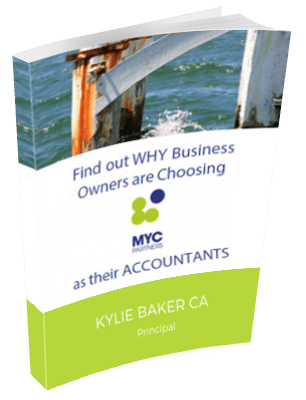
Many small businesses begin as sole traders, which is when an individual owns and runs the business by themselves. It’s a simple, inexpensive way to get started.
However:
Sole traders often consider switching to a company structure as the business grows.The question:
What is a company structure? And when is the right time to make the switch from sole trader to a company?
This article will outline the key differences, pros and cons between sole traders and companies – so you can make the right decision at the right time if and when to switch.
Read on to find out…
With the right information, you can choose the best structure to meet the needs of your growing business.
Quick Links:
Sole Trader vs Company: A Side-by-Side Analysis
When comparing sole trader vs company structures, there are several pros and cons to consider for each:
| Feature | Sole Trader | Company |
|---|---|---|
| Liability | Your personal assets are at risk if the business fails. | Your personal assets are protected if the business fails. |
| Taxation | Profits from your business are taxed the same way as personal income. | The company pays a flat tax rate on its profits. |
| Credibility | Lower perceived credibility | Higher perceived credibility |
| Investment | It may be harder to raise investment for a sole trader than for a company. | A company may be more attractive to investors than a sole trader. |
| Setup and compliance | It is simple and inexpensive to set up a sole trader. | It is more complex and expensive to set up and run a company. |
Sole Trader Benefits

Simplicity and Pass-Through Taxes
One of the biggest advantages of operating as a sole trader is simplicity. You can start instantly by registering a business name and obtaining an ABN.
Ongoing compliance needs and paperwork are minimal. A sole trader does not have to file separate tax returns for the business entity.
Instead:
You report your business income and expenses directly on your personal tax return.
This avoids double taxation since business profits are only taxed once at the individual level based on your income tax bracket.
Sole traders benefit from tax-free thresholds and progressive tax rates that increase with income.
However, there are some key downsides…
Sole Trader Drawbacks
Unlimited Liability and Credibility Issues
As a sole trader, you and the business are considered one entity. This results in unlimited liability – your personal assets are on the hook if the business is sued or cannot cover debts.
Establishing a separate legal structure like a company protects your personal property.
Sole traders may also struggle to win business from larger firms that view sole traders as less legitimate entities than registered companies. Some investors may be more hesitant to provide funding as well.
Let’s now see how a company structure can offer important advantages…
Company Structure Benefits
Liability Protection and Access to Capital
Registering a separate company creates a legal distinction between you and your business. The company’s finances and liabilities are separate from your personal assets.
Shareholder liability is limited to the value of the shares they hold – this protects your home, savings, etc. if the business runs into legal or financial trouble.
Companies are also better positioned to receive funding from angel or venture capital investors to scale operations. The company’s shares can be divided and issued in exchange for investment capital.
Potential Tax Savings
Companies allow for tax planning strategies by taking advantage of the fixed 25% corporate tax rate on profits retained within the company.
Business owners can leave profits in the company up to the annual tax bracket threshold and then take the remaining funds as dividends or salary taxed at the owner’s personal rate. This approach can result in tax savings compared to sole traders whose entire business income is taxed at individual marginal rates up to 47% at the highest tax bracket.
But there are also drawbacks to a company structure:
Company Structure Drawbacks
Complexity and Increased Costs
The administrative complexity and costs of running a company are higher than operating as a sole trader. Business registration, director duties, company filings and compliance obligations require more time, paperwork and professional help.
Ongoing costs like ASIC annual reviews, tax return preparation fees and accounting services add up. The additional complexities and expenses of maintaining a company must be factored in.
With so many factors to consider when choosing between a sole trader or company structure, it’s essential to consult an accountant. A knowledgeable accountant (like us) will assess your specific situation and goals.
We will guide you through the pros and cons of each structure to determine the optimal setup for your business now and in the future.
Our expertise ensures you pick the ideal structure to maximise benefits and minimise hassles.
When to Make the Switch to a Company Structure

As a sole trader, you may do well to continue operating as is, especially in the early stages of your business.
However, there comes a point for many sole traders when switching to a company structure becomes advantageous.
Here are some key times to consider incorporating:
- Reaching High Income and Tax Brackets – The company tax rate is a flat 25% for profits retained within the company, whereas personal income tax rates progressively increase to as high as 47% once you reach certain thresholds.
Incorporating can provide significant tax savings for sole traders earning over $45,000.
- Seeking Asset Protection – Sole traders have unlimited liability, so your personal assets are vulnerable in the event of a lawsuit.
With a company structure, shareholders have limited liability based on their investment in the company.
- Investment Capital Needed – Taking on investors can fuel growth, but most will be more willing to invest in a company than a sole trader.
The company structure also makes it easier to take on investors while retaining control.
- Credibility with Business Customers – Some industries and B2B clients prefer to work with companies they view as more established and lower risk.
Incorporating lends greater legitimacy.
- Planning for Succession or Sale – If you envision someday selling or passing on your business, it’s typically far easier to transfer shares in a company versus the assets of a sole trader.
Discussing your business goals and circumstances with an accountant can help determine if and when the switch would be beneficial.
Making the Switch: How to Form a Company
Once you decide to take your sole trader business to a company structure, here is an overview of what’s involved:
- Choose and register your company name – Make sure your preferred name is available by checking the ASIC database.
- Draft your company constitution – This establishes the company rules and shareholders. Your accountant can provide a template.
- Apply for an ACN and ABN – This registers the company and obtains your Australian Company Number and Australian Business Number.
- Set up a company bank account – You will need a new business bank account separate from your personal accounts.
- Issue shares – Share certificates establish ownership interest. This is where director shares are issued.
- Elect directors – Appoint company directors to make management decisions.
- Report and comply with ASIC requirements – Annual reporting and compliance obligations exist.
While it is possible to DIY a company structure setup, I highly recommend engaging an accountant to ensure the company is properly set up.
An accountant can help get the company structure correct from the start and provide you with the necessary templates and paperwork.
We’ll also work with you on the optimal way to transfer assets and liabilities from your existing sole trader business.
Having professional guidance provides peace of mind that everything is done correctly.
Key Takeaways: Choosing the Right Business Structure
In summary:
Sole traders and companies have pros and cons, and certain situations may call for one structure over the other.
As a sole trader just starting out, you benefit from simplicity and low costs. However, sole traders also have unlimited liability and less credibility with some customers and investors.
Forming a company can provide liability protection, tax savings if profits are retained, and increased legitimacy with a separate legal entity. However, it also involves more complex setup and compliance needs.
As your business grows, weigh factors like your revenue and tax situation, investment capital need, and succession or sale plans. There is no one-size-fits-all answer; the optimum structure depends on your goals and circumstances.
Before incorporating, have an in-depth discussion with your accountant. It is important to have an advisor who understands your business to determine whether transitioning to a company makes sense for your business.
Contact us today to discuss what business structure is best for you.






